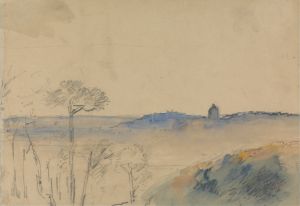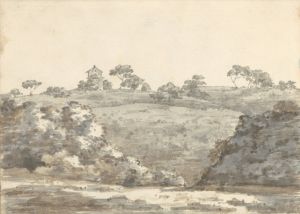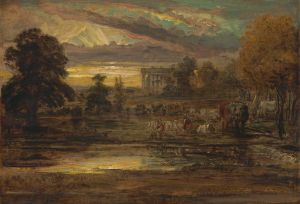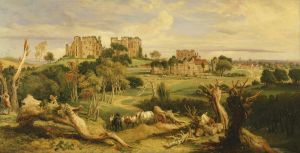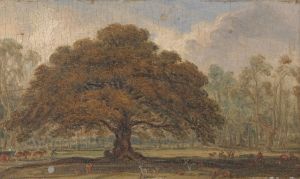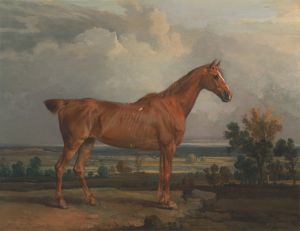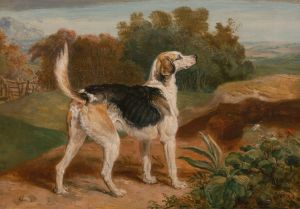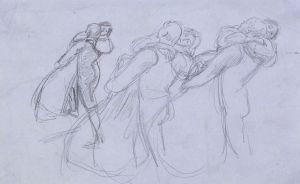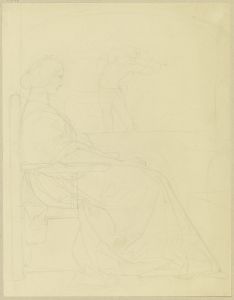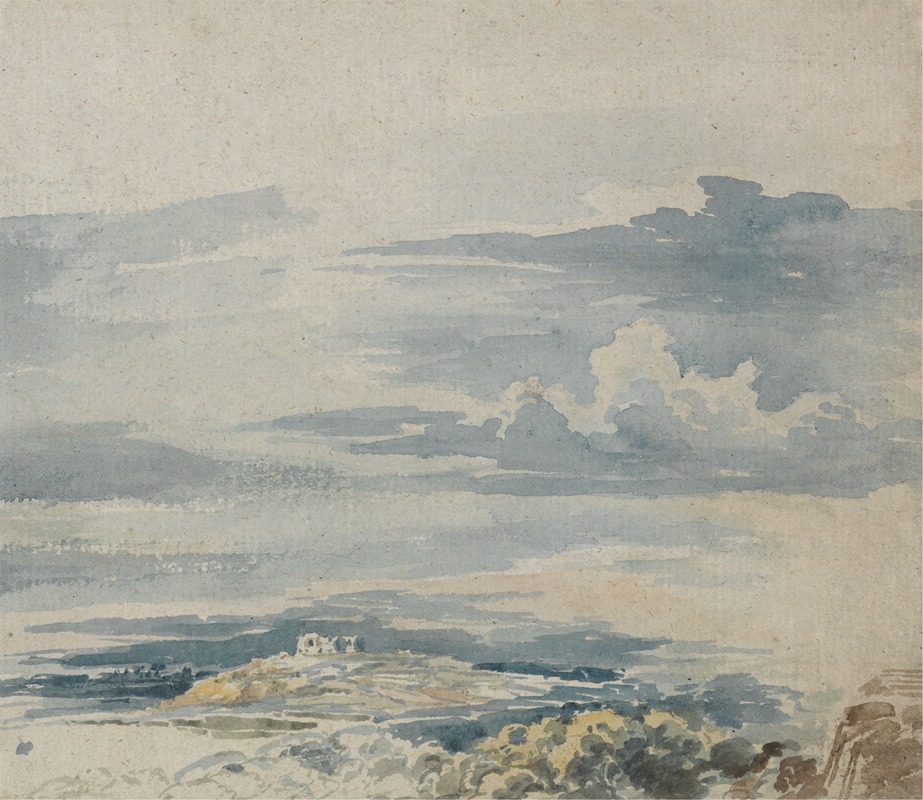
Landscape with a Castle on a Hill
A hand-painted replica of James Ward’s masterpiece Landscape with a Castle on a Hill, meticulously crafted by professional artists to capture the true essence of the original. Each piece is created with museum-quality canvas and rare mineral pigments, carefully painted by experienced artists with delicate brushstrokes and rich, layered colors to perfectly recreate the texture of the original artwork. Unlike machine-printed reproductions, this hand-painted version brings the painting to life, infused with the artist’s emotions and skill in every stroke. Whether for personal collection or home decoration, it instantly elevates the artistic atmosphere of any space.
"Landscape with a Castle on a Hill" is a painting by the British artist James Ward, who was born on October 23, 1769, and died on November 17, 1859. Ward was a notable painter and engraver, recognized for his animal paintings, landscapes, and genre scenes. He was a member of the Royal Academy of Arts and is considered one of the prominent figures in British art during the late 18th and early 19th centuries.
The painting "Landscape with a Castle on a Hill" exemplifies Ward's skill in landscape art, a genre that he explored extensively throughout his career. The work depicts a serene countryside scene dominated by a castle perched atop a hill, which serves as the focal point of the composition. The landscape is rendered with meticulous attention to detail, showcasing Ward's ability to capture the natural beauty and atmospheric conditions of the English countryside.
Ward's landscapes often reflect the influence of the Romantic movement, which emphasized the sublime beauty of nature and the emotional response it evokes. In "Landscape with a Castle on a Hill," this influence is evident in the dramatic interplay of light and shadow, as well as the sense of tranquility and timelessness that permeates the scene. The castle, though a man-made structure, appears harmoniously integrated into the natural surroundings, suggesting a peaceful coexistence between human civilization and the natural world.
Throughout his career, Ward was known for his versatility and technical proficiency. He initially trained as an engraver under the guidance of his brother, William Ward, who was a successful mezzotint engraver. James Ward later transitioned to painting, where he achieved considerable success and acclaim. His works were exhibited at the Royal Academy and other prestigious venues, earning him a reputation as one of the leading artists of his time.
In addition to his landscapes, Ward is celebrated for his animal paintings, which often feature horses, cattle, and other livestock. His ability to depict animals with anatomical accuracy and expressive detail contributed to his popularity and enduring legacy in British art. Ward's interest in animals and rural life is also reflected in his landscapes, which frequently include pastoral elements and scenes of agricultural activity.
"Landscape with a Castle on a Hill" is a testament to Ward's mastery of landscape painting and his deep appreciation for the natural world. The painting captures a moment of stillness and beauty, inviting viewers to contemplate the harmonious relationship between nature and human history. While specific details about the painting's provenance and current location may not be readily available, it remains an important example of James Ward's contribution to the landscape genre and his broader artistic achievements.
Overall, James Ward's "Landscape with a Castle on a Hill" stands as a significant work within his oeuvre, showcasing his talent for capturing the essence of the English countryside and his ability to convey the emotional resonance of the natural world through his art.







